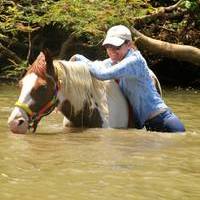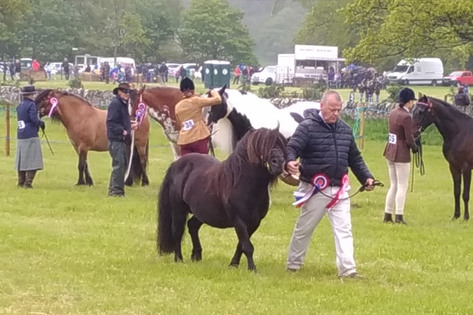
Are You & Your Horse Ready For Bitting Advice? The Steps You Need To Consider First
Equestrian Advice & Guides All Disciplines
Build your business profile for FREE and expose your services to thousands of potential clients!
Create my profile now!
I think one of the biggest challenges that riders face in some remote countries is a lack of diversity. You only know what you know – and commonly, that is what you are exposed to on your front doorstep.
I was sitting having dinner with a few clients in an Asian country, and one of them laughed, pulled out their phone and said – oh man, I have to show you this video, it’s hilarious…. And they showed a horse (an event horse) doing his dressage test on grass, inside the white boards, in the middle of a field. There were four arenas in a row, all in a lovely big, green, flat field with what looked like really old pasture grass, so great footing. I watched the video, waiting for the hilarious part, and uhh, nothing happened. OK, I said, I don’t get it – what was so funny? Well, he was doing his test, in a field, on grass! Uhhh, yes? And then it dawned on me – they only have a surfaced, purpose-built arena to ride on. They have some, limited, hacking / trails, but if you want to trot, canter, school, jump, you do it on a surface. Riding on grass? Something that none of them had ever done or thought possible.
Things like that test are often popping up – you can ride cobs. Really? Aren’t they only for pulling carts? That big black horse with fluffy legs – is it a Welsh cob, a cob, a Friesian or a Shire? Is there a difference? They are all big, black and hairy…
Shows and competitions are one of the most telling times. When I was still new to Asia, I arrived at a show in time to watch the big jumping class of the day. It was the National class, with the elite riders who were trying to qualify for the Asian Games. When I got there I thought I was way to early, the jumps hadn’t even been raised, until I found out that the anticipated class of enormous jumps was 1.20m, and there were 3 riders. When you are used to the big class being 1.50m and there being 50 riders entered – well, you can draw comparisons.
These are not negatives as such – all countries have to start somewhere, and things are on the upward trend. The negative I find in them, is people haven’t seen enough to be open minded and ask questions, more questions, and even more questions.
 I was in Scotland in the summer and was lucky enough to go to the Fife Agricultural Show. I love wandering around these shows, seeing everything from the tractors to handy crafts, to sheep, to ponies. We saw working hunters, show jumpers, driving teams, lead reins ponies and all manner of others, but what caught most attention? I videoed the final of the in hand showing – the Champion of Champions. And in the class was the Champion Clydesdale, Highland, Shetland, miniature Shetland, Mountain and Moorland, and part bred Mountain and Moorland. When I posted it on social media, all the non-UK people were asking – what are these? What are they doing? Why are they being led around like this, what is the point etc. For lots of people, showing is an alien concept for starters, but seeing a Clydesdale competing against a miniature Shetland?
I was in Scotland in the summer and was lucky enough to go to the Fife Agricultural Show. I love wandering around these shows, seeing everything from the tractors to handy crafts, to sheep, to ponies. We saw working hunters, show jumpers, driving teams, lead reins ponies and all manner of others, but what caught most attention? I videoed the final of the in hand showing – the Champion of Champions. And in the class was the Champion Clydesdale, Highland, Shetland, miniature Shetland, Mountain and Moorland, and part bred Mountain and Moorland. When I posted it on social media, all the non-UK people were asking – what are these? What are they doing? Why are they being led around like this, what is the point etc. For lots of people, showing is an alien concept for starters, but seeing a Clydesdale competing against a miniature Shetland?
People in the UK and other countries where horses are a long-standing heritage, often overlook what they have on their doorsteps, which is a huge pity, considering how much every breed, disciple and idea can benefit and interact with another. Schooling on good grass is a wonderful way to check balance, focus and way of going for any horse, dressage or not. Watching talented riders over very big fences is a great way to encourage and inspire up and coming riders, as well as study technique. And comparing the conformation of a Shetland and a Highland is the best way to start to question – what is good conformation really about?
Diversity is something to embrace – what could you do today to diversify your horse knowledge?

